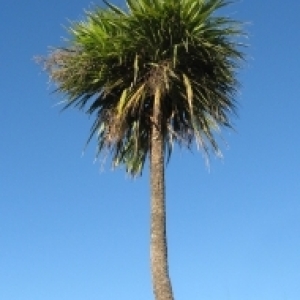Senior Steps Out
From the lawn I noticed the senior praying mantis nymph behaving strangely. On closer examination I found she was stalking a large blowfly. It was sitting on an adjacent leaf busily grooming itself. She was moving like a cat, belly to the surface of her leaf and carefully moving one leg at a time, with looong pauses between. She got to within 3cm of the fly. I watched for about five minutes. The fly’s toilet routine was fascinating, as was the vigilance of the mantis. I was keen to see what would happen, since the fly was much too big for the mantis to tackle. Eventually my patience cracked and I went to get my camera. When I returned the fly had gone, leaving only a smear of poo. The mantis was hanging over the tip of her leaf staring at the smear. See extra shot. Then she stepped off her leaf onto the one vacated by the fly.
A walking mantis is so intriguing because the usually folded front legs are used. Note how the spiky mid-sections, along with the leg spot, resemble a piranha-like jaw. This is for catching and holding the prey when the mantis is eating. The leg spot distinguishes the New Zealand praying mantis from a very similar Australian one.
Later in the day I went out to investigate a commotion in the hedge close to the veranda. Many birds of different species were voicing their distress. As I stepped under the branches something round and dark plopped at my feet. At first I couldn’t make out what it was, and then I saw it was a bird’s head. I quickly looked up and saw a stoat scampering along a branch on the other side of the hedge. A stoat!
The dead bird was the blackbird fledgeling that had been demanding to be fed for the last few days. It hung about on the path and I saw it frequently.
Stoats were introduced into New Zealand in the late 19th century to help control the rabbits that had been introduced earlier to provide meat and sport for hunters. Scientists in New Zealand and Britain warned about the threat to birdlife, but the introduction went ahead anyway. Now stoats are the biggest threat to our native birds and they are believed to have caused the extinction of some. The blackbird fledgeling was not a native, but it wasn’t doing any harm.
The waxeyes that have been nesting in that part of the hedge have fledglings which they are still feeding. They kept up their penetrating distress call for a couple of hours after the incident. I don’t know if they lost babies or not.


Comments
Sign in or get an account to comment.


